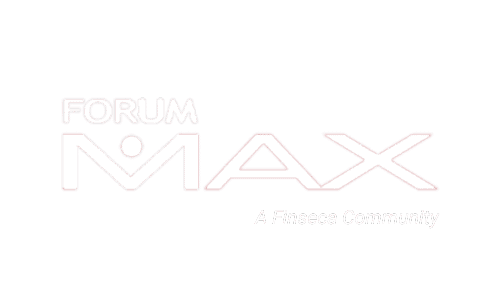
Thursday, 22 December 2016 WRM #16-50
The WRMarketplace is created exclusively for AALU members by the AALU staff and Greenberg Traurig, one of the nation’s leading tax and wealth management law firms. The WRMarketplace provides deep insight into trends and events impacting the use of life insurance products, including key take-aways, for AALU members, clients and advisors.
The AALU WRNewswire and WRMarketplace are published by the Association for Advanced Life Underwriting® as part of the Essential Wisdom Series, the trusted source of actionable technical and marketplace knowledge for AALU members—the nation’s most advanced life insurance professionals.
TOPIC: Preserving Value & A Family Legacy – 8 Non-Tax Reasons to Use Life Insurance for Business Succession.
MARKET TREND: Short of a lifetime sale or public offering, all business owners must plan for the transfer of their business, likely their biggest asset. This means, regardless of possible tax changes, succession planning remains absolutely critical for business owners to preserve business longevity and ensure financial security.
SYNOPSIS: In capitalizing on the value of their companies, business owners must confront two important but distinct matters in their legacy plans: (1) tax planning and (2) business succession planning. Business succession planning is crucial to support business continuity, provide financial security for business owners and their families, and ensure sufficient liquidity to pay taxes and liabilities at the owner’s passing. While tax issues have dominated recently, halting business succession plans due to tax concerns can leave business owners, their businesses, and their families in a precarious position if something should happen to the business owner in the interim. Life insurance has unique attributes (e.g., income tax-deferred growth within the policy and payment of death benefits without income tax), which can provide practical solutions to many of business succession needs.
TAKE AWAYS: Despite tax uncertainty, business owners should move forward with their business succession plans to protect their businesses and families. Life insurance can support many practical business succession goals, including: (1) buy-out funding, (2) retirement planning, (3) disability planning, (4) liquidity, (5) equalization of family members, (6) business interruption/key man, (7) credit management, and (8) deferred compensation planning. To obtain optimal results, business owners should authorize a multi-disciplinary team approach to the implementation and maintenance of their succession plans, linking their insurance advisors with their attorneys, accountants, and other financial advisors from inception.
As business owners often spend a great part of their careers building their businesses, planning for how they can preserve and maximize the value of their companies should be a priority. Business owners will confront two important but distinct matters when contemplating a legacy plan: (1) tax planning and (2) business succession planning. While tax issues have dominated legacy planning discussions post-election, business owners should not let tax uncertainty stop their succession plans, as they are critical to support business longevity and the financial security of the owner and his or her family. The unique features of life insurance (e.g., income tax-deferred growth within the policy and income tax-free payment of death benefits), coupled with a cash payout of death benefits, can satisfy many practical business succession needs.
COMBINING LIFE INSURANCE & BUSINESS SUCCESSION: 8 NON-TAX REASONS
- Buy-Out Planning. Buy-sell arrangements (“BSAs”) require the business or other business owners to purchase an owner’s interests after a specified triggering event (e.g., death). The BSA creates a market for the deceased or departing owner’s interests and can establish a fair value for the business interests, minimizing conflict among other business owners and family members. Combining life insurance with BSAs provides the business or other owners with readily-available cash to buy the departed owner’s interests, allowing the owner’s family to receive immediate liquidity from the buy-out (rather than deferred payments and/or a promissory note). A permanent policy with cash value, as opposed to a term policy, can provide funding for lifetime buy-outs (e.g., through policy surrenders or loans), particularly important when the succession or exit strategy involves the owner’s family.
- Retirement. An early exit by a business owner can be much easier when the owner’s retirement is secure. Using a high cash value life insurance product as an alternative source of retirement funds for the owner may reduce tension and reliance on the business, facilitating lifetime succession planning. Owners can make withdrawals from the policy’s cash value (up to the policy’s basis) and take policy loans without recognizing taxable income (if the policy is not a modified endowment contract) according to longstanding and appropriate tax principles.
- Disability Planning. A cash value product can provide lifetime access to funds for a disabled business owner or to support a buy-out of a business owner due to disability. As a “belt and suspenders” approach to provide additional financial security, business owners also may want to purchase disability insurance to supplement the amounts received pursuant to the terms of a BSA.
- Liquidity. The payment of any estate taxes, as well as other expenses and liabilities due at the owner’s death, could force a liquidation of the business at a below-market value. Life insurance provides immediate liquidity to protect the business from a forced sale, thereby maximizing the business’ value and minimizing conflict among the deceased owner’s family and any other business owners.
- Family Equalization. Not all of an owner’s family members may actively participate in the business or have a desire to participate. Leaving the business equally to all heirs may cause significant family conflicts and/or business disruptions after the owner’s passing. For example, passive heirs likely will want to cash-out their interests, possibly forcing a sale of the business or its assets. With life insurance, the owner can leave the business solely to active heirs and provide an equivalent cash benefit to passive heirs or create a separate fund that active heirs can use to later buy-out passive heirs.
- Business Interruption/Key-Man. Life insurance can minimize the economic impact of an owner’s death by giving the business sufficient liquidity and time to recover. This may be particularly important for businesses relying on capital infusions from investors, as they may require life insurance to backstop the early death of a key executive.
- Credit Management. Life insurance often supports the acquisition of business financing by serving as additional security for business loans (e.g., lender requires maintenance of life insurance on a key owner or executive as a predicate to a loan).
- Deferred Compensation. Life insurance can fund non-qualified deferred compensation plans for the owner, such as through so-called “rabbi” trusts or supplemental executive retirement plans (SERPS)
GETTING STARTED: FORM A TEAM
To ensure optimal results for an insurance-supported succession plan, business owners should involve their attorneys, accountants, and financial advisors in discussions with life insurance advisors from inception.
- Product Selection. The type and amount of life insurance to acquire are issues that should be tailored to the purpose of the coverage and the owner’s budget. For instance, the funding of a deferred compensation plan may need a policy with maximum annual funding and a high cash value component, while an equalization plan may be better served by a permanent policy with a guaranteed death benefit using minimal cash value.
- Buy-Out Structure. The preferred structure of an insurance funded BSA will vary depending on numerous factors, including the type of business entity involved (C corporation, S corporation, partnership, or LLC) and the number of owners. Typical buy-sell structures include redemptions (business buys out the deceased or departing owner) and cross-purchases (the remaining owners individually buy out the deceased or departing owner). There are several variations within these structures, each with different advantages and considerations. Regardless of the selected structure, BSAs that rely on life insurance to fund an owner’s buyout should:
- Require that the insurance policies are maintained in force;;
- Provide mechanisms to ensure that the policies offer adequate insurance coverage commensurate to the agreed upon buy-out price (with adjustment in coverage as needed to match any buy-out price changes);;
- Provide for the allocation of any insurance proceeds that exceed the buy-out price (e.g., retained by the business, allocated among the remaining owners, etc.);; and
- Implement a regular review system to ensure compliance with the above.
Accordingly, it is extremely important that business owners implement a team approach to succession planning.
EOLI Compliance. Beneficiaries of life insurance policies typically receive the policy death benefits without income tax. However, for “employer-owned life insurance” (“EOLI”) contracts insuring employees, Internal Revenue Code §101(j) limits the death benefits that the insuring employer can receive without income tax to the amount of premiums and consideration paid by the employer for the contract. Exceptions to this rule above apply for (1) policies insuring directors, various highly-compensated officers and employees, and over-10% shareholders;; and (2) death benefits paid to the insured’s estate, family members, or designated beneficiaries, or used to purchase an equity interest in the business from any such person.
A business may avail itself of these exceptions only if it complies with specific employee notice and consent requirements before issuance of the life insurance policy on the employee. Business owners must understand and satisfy these requirements before the purchase of any potential EOLI contract. (See Washington Report No. 12-24 for a more detailed discussion).
Other Tax Issues. Income and estate or gift tax issues likely will arise when incorporating life insurance into the business succession plan, depending on the plan’s structure, the business entity involved, and the designated owner and beneficiary of the policy. For example, if a business pays premiums on a policy owned by and insuring the owner, there may be income tax issues associated with deemed compensation to the owner. Further, if the policy is owned by a life insurance trust created by the owner, the business’ payment of premiums may have gift tax implications. These issues again emphasize the need for a multi-disciplinary, team approach.
HOW TO MAINTAIN
Business owners should understand that business succession plans are not “set it and forget it” propositions.
Post-planning monitoring and maintenance is crucial to ensure the plan functions as anticipated over time. Business succession plans must adjust to address the changing circumstances of both the owners and the business, including:
- Changes in the business’ value
- Changes in business ownership (departure or entry of owners) or owners (health conditions, age, etc.)
- Tax law changes
- Product performance developments (e.g., is the cash value of a policy performing to meet the deferred compensation objectives?)
Annual policy audits or reviews are recommended to evaluate whether the policies are performing as projected, based on the purposes for which they were acquired and the current insurance requirements of the business and owner(s).
Plans for annual reviews should be agreed to and adopted in writing by business owners to ensure evaluations occur regularly and whenever there have been significant changes, like those above. A sample checklist of annual review items and questions is attached. Insurance advisors can provide assistance by reviewing the life insurance and maintenance needs of the business owners, helping to craft annual review plans, and providing regular reminders for policy reviews.
TAKE AWAYS
Despite tax uncertainty, business owners should move forward with their business succession plans to protect their businesses and families. Life insurance can support many practical business succession goals, including: (1) buy-out funding, (2) retirement planning, (3) disability planning, (4) liquidity, (5) equalization of family members, (6) business interruption/key man, (7) credit management, and (8) deferred compensation planning. To obtain optimal results, business owners should authorize a multi- disciplinary team approach to the implementation and maintenance of their succession plans, linking their insurance advisors with their attorneys, accountants, and other financial advisors from inception.
SAMPLE CHECKLIST – ANNUAL BUSINESS INSURANCE REVIEW
|
Annual Review for Each Policy Owned by Business or Owner |
Response |
| Policy Basics | |
| Policy Number and Issue Date | |
| Policy Type (Term (Convertible), Whole, Universal Life, etc.) | |
| Policy Conversion Date and Requirements (if applicable) | |
| Name, Current Age, and Health Status of Insured | |
| Name of Owner (if an entity, what type: C corp. S. corp., partnership, etc.) | |
| Name of Beneficiary or Beneficiaries (and percentage of death benefits) | |
| Current Face Amount/Death Benefit | |
| Current Cash Value and Cash Surrender Value | |
| Current Outstanding Policy Loans | |
| Current Premiums, Due Dates, & Timing (Annually, Quarterly, Monthly) | |
| Purpose of Coverage (Buy-out funding, keyman, deferred compensation) | |
| Questions Regarding Coverage, Purposes, Etc. | |
| Have there been changes in the business (growth or loss in value), owners (disability, death), or applicable tax or other laws? | |
| Does the coverage purpose still exist (e.g., is the key executive still employed)? | |
| Is the policy subject to a buy-sell, trust, split-dollar, deferred compensation, or other arrangement? Have the business and owners complied with the terms? | |
| Is the existing coverage sufficient for the business purpose (e.g., can it support a buy-out of the business at current value)? | |
| Is the policy performing as expected to support its purpose (e.g., to meet deferred compensation goals or as an exit for a split-dollar arrangement)? | |
| Is the policy’s ownership and beneficiary structure optimal for tax and succession planning (especially if there have been tax law or business changes)? | |
| Is the policy an “employer-owned life insurance” contract under Internal Revenue Code §101(j)? If so, were the notice and consent requirements for the insured employee satisfied before issuance of the policy? | |
| Can the business’ or owner’s cash flow support current premiums? If not, can adjustments be made or a different funding approach adopted (e.g., a split-dollar arrangement)? | |
TCO 362283939v2
DISCLAIMER
This information is intended solely for information and education and is not intended for use as legal or tax advice. Reference herein to any specific tax or other planning strategy, process, product or service does not constitute promotion, endorsement or recommendation by AALU. Persons should consult with their own legal or tax advisors for specific legal or tax advice.
WRM 16-50 was written by Greenberg Traurig, LLP
Jonathan M. Forster
Martin Kalb
Richard A. Sirus
Rebecca Manicone
Counsel Emeritus
Gerald H. Sherman 1932-2012
Stuart Lewis 1945-2012






